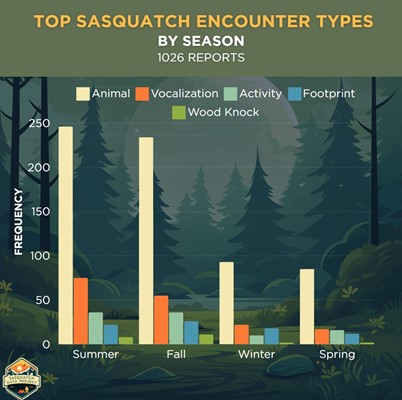Have you ever wondered if Bigfoot, also known as Sasquatch, was real? Yes, I know I sound crazy. I don’t blame you for thinking that. Not everyone believes in Bigfoot, and why should you? There’s no hard proof, right? Actually, there is. With the help of former NASA researcher and Twitch streamer Terrestrial, let’s investigate evidence that suggests that our beloved cryptid friend Sasquatch is a type of great ape.
“But Jill, how are either of you qualified for this?” I’m glad you asked my fine, not-so-furry friend! I’m not at all qualified, but I’ve been investing in this topic for about 15 years. That’s why I am bringing you research, and data done by someone who is, in fact, an expert.
Terrestrial earned her bachelor’s degree in Earth and Atmospheric Sciences from Georgia Institute of Technology, and, as I said earlier, is a former NASA researcher. She is also currently pursuing a Blue Ridge Naturalist certification. In 2023, Terrestrial retired from full-time streaming on Twitch to focus her time on her true passion, Bigfoot. In 2024, she officially launched the Sasquatch Data Project, which aims to give a comprehensive dataset of sighting reports optimized for analysis.
If you are unfamiliar with great apes, they are named for their large bodies and humanoid ape-like features. According to the City of Albuquerque website (cabq.gov), there are four types of great apes: orangutans, gorillas, chimpanzees (including bonobos), and humans. Yes, you read that correctly: humans count as great apes. We share about 98 percent of our DNA with chimpanzees.
Now that the basic information is out of the way, let’s focus on Bigfoots. Bigfeet? I don’t know. For the sake of my brain, we’re going to just call them Sasquatches. There are five different observation types: animal, vocalization, activity, footprint, and wood knock.
Animal observation reports are filled out by witnesses who have seen a clear view of a sasquatch. Vocalization is self-explanatory, but in any case, vocalization reports are made when a witness hears a proposed Sasquatch sound. These could include screams, howls, grunts, or whistles. Written down, that seems like it could literally be any animal, but on recording, the sounds are very distinct. Obviously, this is a print article so if you want to hear what I am writing about, it’s just a YouTube search away.
The third observation is activity. Similar to vocalization, activity doesn’t need much of an explanation as to what it is. It just is what it is. Activity reports usually include sounds of bipedal walking or running, tree shaking, and rock throwing. In these cases, a sasquatch was not seen. My personal favorite, and something I hope to observe myself one day, is footprints. The final observation is wood knock, which is a distinct wood-on-wood sound heard by a witness.
Let’s look at some numbers:

As shown in this graph (which is interactive at the website sasquatchdataproject.com if you want to see the data for yourself), there have been 1,026 reports broken down by season and observation type. I have taken the time to break it down further.
There has been a total of 658 Animal reports, 169 vocalization reports, 98 activity reports, 78 footprint reports, and 23 wood knock reports gathered by Terrestrial.
There are 437 individual sasquatch heights recorded, the tallest standing around 10-11 feet. The shortest recorded stands at three to four feet, this would most likely be a juvenile. The most common height recorded is seven to eight feet tall. There have also been 111 individual footprints recorded, the largest being 24-26 inches long. The smallest is four to six inches long, also most likely belonging to a juvenile. The most commonly recorded length for foot size was 16-18 inches.
Just for a little fun bit: there have been three sightings in Lamoille County, Vt.: One in 1989 in Eden, another in 1995 in Morrisville, and the last, in Eden a second time, recorded in 2019. The names of the 1989 and 1995 witnesses are unknown, but the sighting from 2019 was reported by Jeff Shepard, who has made multiple reports from all over New England.
So, do you believe in Bigfoot? Interested in following sightings? You can visit sasquatchdataproject.com to learn more about the current research, view spreadsheets, and read blog posts about Sasquatch updates. For informative posts, including videos, follow @sasquatchdata on TikTok and Instagram.









